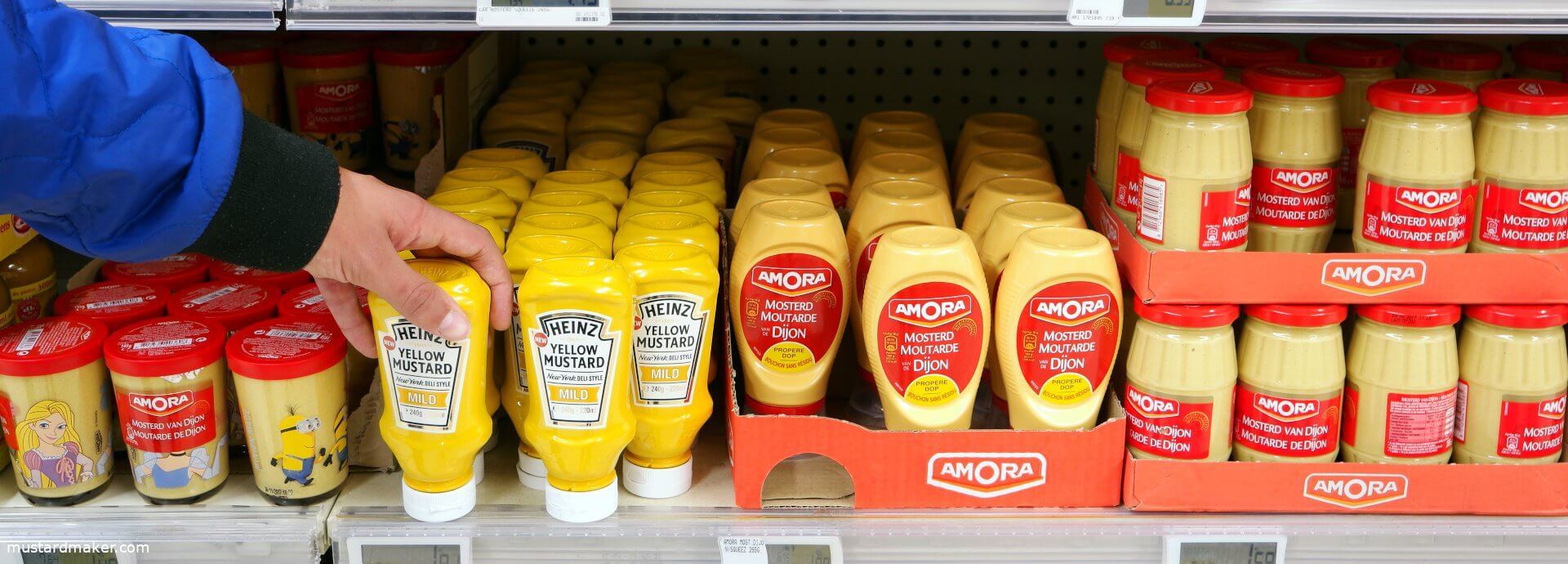Mustard varieties on sale
Mild table mustard, medium-hot delicatessen mustard, sweet mustard and hot mustard as well as mustard flavored with herbs and fruits can be found in stores.

Table of Contents
Bordeaux mustard
Table mustard is made from mustard seeds (grind less than 30 mm), vinegar, water, salt and spices. The few ingredients are reflected in the taste. It is not outstanding. Therefore, table mustard is usually used for cooking and for refining sauces. Table mustard is available in fine and coarser consistency and is often flavored with herbs, fruit or spirits.
Dijon mustard
For the production of Dijon mustard, black or brown de-oiled mustard seeds are used, sometimes also from sareptasenf. The mustard seeds are sieved and not ground and then pre-swollen in wine vinegar, strained and freed from their husks. The maturing process of the mustard paste is done with table salt and spices. Dijon mustard is light yellow in color and has a sharp, salty taste. It is the fattest mustard among the mustards offered, because only the mustard seed, which has not been deoiled, is processed. Like Bavarian beer, Dijon mustard is made according to a purity law.
Düsseldorfer Mostert
Düsseldorfer Mostert consists of yellow and brown mustard seeds and unfiltered brandy vinegar. At its origins in 1726, unfiltered grape must was used instead of brandy.
English mustard
English mustard is hot mustard, the sharpness of which comes solely from the mustard seeds. The addition of sugar creates a sweetly pungent flavor. English mustard is made from dark mustard. It is mixed with light mustard so that the sharpness lasts longer. Additional spices such as chili or pepper should not mask the actual sharpness.
Estrogon mustard
Tarragon mustard with smooth consistency consists of light mustard seeds with a grinding degree between 30 -40 mm. The smell of tarragon mustard is reminiscent of vinegar. It has only a slight sharpness and tastes spicy aromatic with a basic taste of salt. Tarragon mustard is suitable for most dishes.
Japanese mustard
Kona Karashi is usually offered as mustard powder. The Japanese mustard is mixed 1: 1 with water to form a paste, if required. Because the vinegar is missing, the mustard tastes sour, a little bitter and spicy.
Krems mustard
Kremser mustard is obtained from dark and light mustard seeds. After pre-swelling with wine or fermentation vinegar, grinding takes place. After grinding, the dark parts of the husk are still visible. Kremser mustard is mixed with a lot of sugar. It tastes sweetish and mild. And is therefore called sweet mustard.
Mostrich
Mustard is called mustard, which used unfermented grape juice for the production instead of vinegar. During production, candied fruits are pickled with lauter sugar and mustard oil.
Mosarda die Frutta
Mosarda die Frutta refers to a type of mustard with a sweet and spicy flavor.
Rotisseur mustard
Rotisseur mustard is a collective name for heat-resistant mustard, which is suitable for seasoning grilled meat, for example.
Sareptasenf
Sareptasenf is made exclusively from sarepta seeds. Other ingredients are wine vinegar, salt, spices and sugar. Sarpretasenf is a mild mustard, which is peeled before processing, but not deoiled.